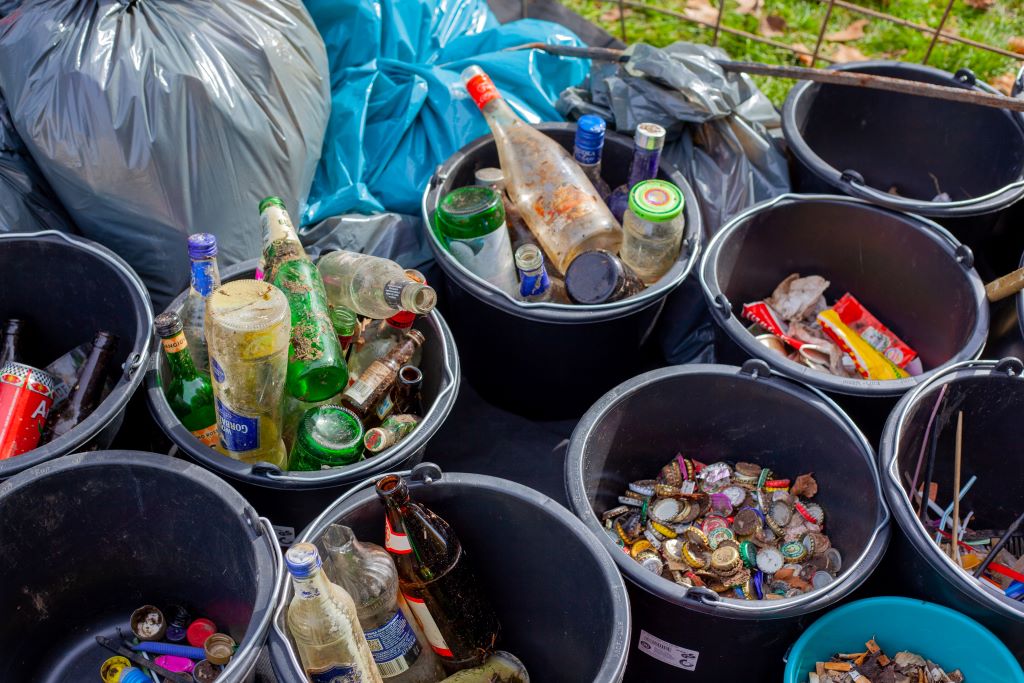Earth Day
This is Earth Week and April 22 is Earth Day. The theme for 2023 is Invest in Our Planet. Can the actions of one person have a positive impact on the environment or even matter at all?
Earth Day began in 1970 and I admit that beyond the acknowledgement of the actual day, I don’t usually do anything spectacular to mark the occasion. Honestly, I question whether I alone can positively impact climate change and the environment in general.
The purpose of a dedicated day celebrating Earth is to encourage civil action through education about conservation. Although the most significant change in protection and sustainability will need to come from global solutions, some changes can be made at the individual level to make a difference.
When I consider the food I eat, how I get around, how I stay warm in winter and cool in summer, where I buy my groceries, clothes and other purchases, and just as importantly, the management of all of the waste that comes from each of these things – these are all factors in my personal impact, my carbon footprint, on planet earth.
US-based organization coordinates global events across 193 countries with a mission to “diversify, educate and activate environmental involvement worldwide”.
EARTHDAY.ORG
Reduce-reuse-recycle. In my own way, this is all part of my healthy lifestyle, but I wonder if I could be doing so much more.
A Personal Carbon Footprint
An individual’s carbon footprint is the amount of greenhouse gas emissions (GGE) generated from daily actions – primarily from the foods we eat, our choice of transportation and the homes we live in. The gases created trap heat from the sun in the atmosphere leading to global warming.
Not all gases have the same effect on the atmosphere. Some greenhouse gases last longer than others and have the potential for greater damage to the atmosphere and ultimately the Earth.
Life choices

There are 8 billion people on the planet yet the largest negative environmental impact comes from countries with the highest incomes, not the highest population. It comes down to how each of those individuals chooses to live, and generally, the more developed countries are having the biggest negative impact.
That is not to say that within many countries contributing to pollution and greenhouse gases, there aren’t advocates and champions working toward a healthier way of life and ultimately a greener planet as with EARTH.ORG.
Canada was the worst offender of GGE per capita in 2019 despite ranking 10th globally. In the US the per capita rate is estimated to be 16 tons per person. Personally, I find it challenging to visualize what 10 or 20 tons of gas would look like.
Of course, some make personal choices to their lifestyles to reduce their individual carbon footprint, but in the end, the average is still excessive and climate change is the result.
Feeding yourself

Feeding yourself starts with how you choose to feed yourself. We most often choose food based on our personal health needs, balancing vitamins, minerals, healthy fats, fibre, and overall nutrition.
To consider the environment in our food choices we need to know where plants have been grown, the use of pesticides or other chemicals, the harvesting process, and transportation to our locale. When considering animal-based food, think of the type of feed used, how much water was needed and the space needed to raise the animal.
There is some debate, but in general, experts agree eating less meat, and red meat in particular, is a better choice for the environment – and your health for that matter. A Mediterranean diet that includes small amounts of fish and chicken is considered the best option, while others would choose a vegan diet.
Choosing the food you consume is important but so is avoiding food waste. Forty percent of food production in the US goes to waste which equates to over 3 billion tons of carbon emissions per year.
My community doesn’t have a kitchen composting program but I store all of my compostables in biodegradable bags in my freezer then every few weeks I take the collection of bags to a local ‘green organization’ and they do the composting. It helps that I have room in my freezer but I recognize this isn’t an option for everyone.
I do everything I can not to waste the food I buy knowing that reducing the amount of food waste will have a much greater impact on the environment than composting kitchen scraps.
Home life

Basic energy consumption in our homes comes from heat, water and electricity. Most of us don’t have a choice as to the source of energy but we can be mindful of the way we use various types of energy and then look at ways to make our homes more energy efficient.
In my home, I have a gas furnace, gas stove and hot water tank. I try to reduce energy consumption by keeping the thermostat set to less than18/13 Celsius in the winter and using the air conditioner rarely. I turn lights off when I’m not in a room and unplug some electronics- others I just turn off.
Turning down the thermostat and hot water tank, installing proper insulation and recycling old appliances can make a difference in the amount of energy used. LED lights use 90% less energy than traditional incandescent bulbs and it can take several years before replacement is needed.
Recycling programs are available in most communities for household waste. These may differ in the types of recyclables that are accepted but a considerable amount of household waste can be averted from landfills through recycling programs. I know this because I only have one tiny bag of garbage each week but make regular deliveries to the recycling depot. So much of our food is packaged in plastic or wrapped in plastic on a styrofoam tray neither of which are accepted materials in the curbside bin.
Last week I bought a patio furniture set – two huge cardboard boxes that included 10 individually plastic wrapped cushions and which bubble wrapped metal frames. I could break apart the boxes to fit into the curbside bin (it would take two weeks) but the plastic would need to be taken to the recycling depot.
Of course, I do all I can to make as few trips as possible to the recycling depot so when I do my car is stuffed full of plastics (separated into soft and rigid), styrofoam(separated into white and coloured), glass jars and bottles separated from the refundable wine bottles.
Even though I think I am doing my part with recycling, having to use a car to get to the depot might negate any positive action from recycling or energy reduction. And I don’t even want to admit how many wine bottles I donate to the recycling depot each month, but at least they are recycled into new glass containers.
Travel near and far

Essentially, the biggest reason I am still driving a 2011 Toyota Venza is the financial cost. On average I drive less than 5 thousand kilometres per year which is less than half of the average driver.
I like the idea of transitioning from a gas-fueled vehicle to a hybrid or electric but admittedly I need to do more research to make an informed choice. In the meantime, I can use my bike more often, keep my car well maintained, put the windows down rather than using air conditioning, and when I make long-distance drives to the coast using cruise control can help to reduce gas consumption.
On average I take one international flight each year and the GGE from that one return trip will far outweigh any reduced emissions from reducing the use of my car. If you use air travel frequently you might consider using carbon offsets offered by the airline.
Shopping
These days, many stores are no longer offering bags at the till. I have seen more than one person carrying armloads of loose groceries to their car – to be fair they might have only intended to pick up one item. Just take your own cloth or reusable bags even if you’re only going to get bread and cheese.
Personally, am not a big-time shopper, but my downfall is that I only buy new clothes and have not been successful with the ‘one-in equals one-out’ theory. Eventually, I donate unused clothing and household items but if I followed the ‘one-in-one-out’ mantra my closet would only be half as full and my garage would be considerably less cluttered.
It would be easy to think that natural fibres used in clothing are best but there are layers of complexity. There are many factors to consider in the manufacture, distribution and reclaiming of clothing but essentially buying fair trade and second-hand are good places to start.
Buying quality clothing usually means you will keep it longer and get more wear out of it. In the fashion world styles do eventually return but by then most of us have already given away those wide-leg pants or long skirts that are now coming back into fashion.
Something else to consider is the material or fabric used not just in clothing. Synthetics, plastics and other manmade materials are cheaper to buy but will end up in landfill sooner. Furniture made from ethically sourced solid wood might be beyond your budget and hard to find but worth it in the end.
The more we educate ourselves before we buy the more complex…… or maybe the easier a choice becomes.
Carbon Offset

Using the online questionnaire I calculated my carbon footprint through Climatehero, a Swedish organization. It turns out that my 8.5 tons of GGE is better than the average Canadian, but there are still some areas where I knew I could make improvements.
What I didn’t know is that for about $20 a month, I can offset my carbon footprint. However, offsetting my carbon footprint isn’t going to eliminate the damage done in the first place. It is more of a future cancelling plan and then maybe I won’t feel quite as bad about taking that transatlantic flight if I pay to offset the emissions.
Carbon offsets work by funding actions that will reduce emissions in one part of the world that compensates for emissions generated elsewhere. Climate Hero and Less are two examples of third-party organizations that fund carbon offset.
As an individual, my day-to-day choice to reduce, reuse and recycle could have a much bigger impact than paying to offset my carbon footprint.
And So….
How can one person who is absolutely living on the grid make a difference?
The challenge is not new, but it seems that despite greater global awareness we are losing ground.
My engagement in the environmental movement is sporadic and to be sure I have never attended a protest or attached the moniker of Activist to my name. I guess I am just a silent individual learning as I grow and doing what I can.



